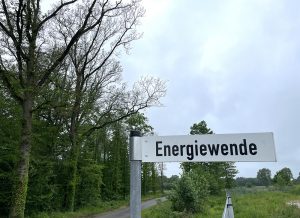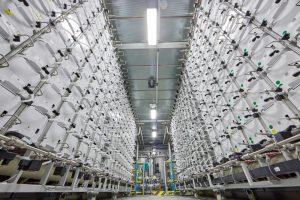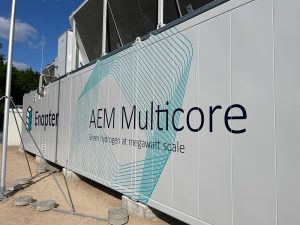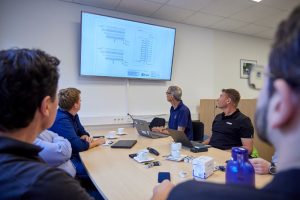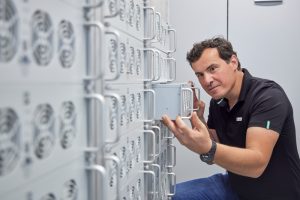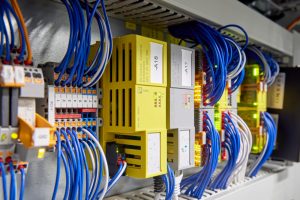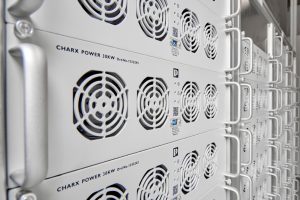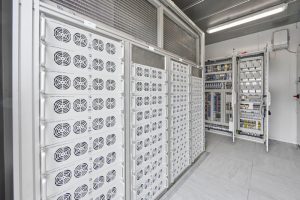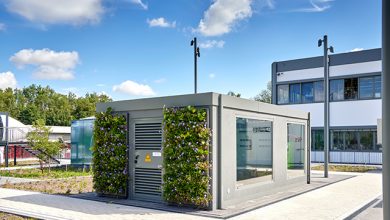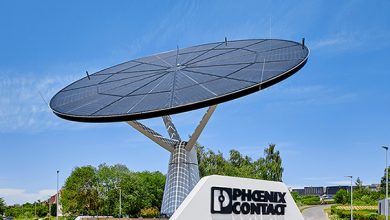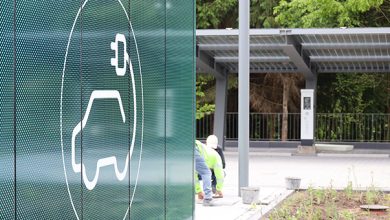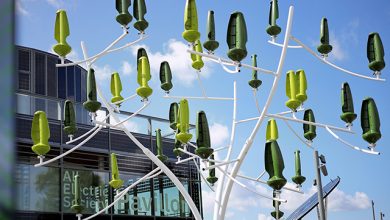Politicians are dreaming about it, scientists are researching it, industry is working on it – green hydrogen has become an emotionally charged topic. Now a success story from Saerbeck in Westphalia is making people sit up and take notice.
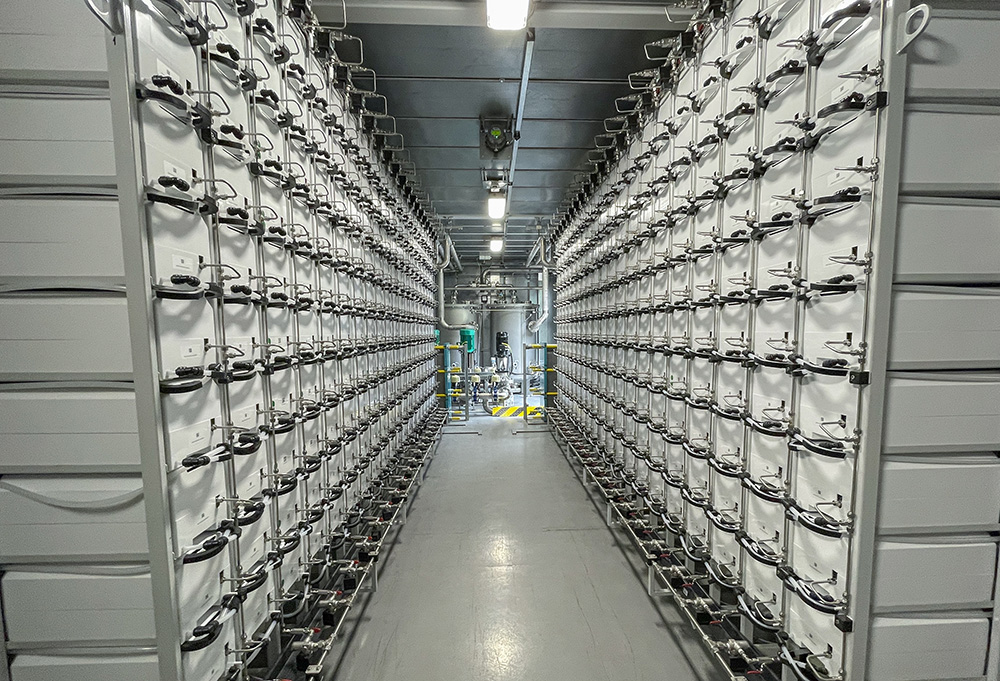
Admittedly: The electrolysis process is no longer entirely new. Alessandro Volta presented his “Volta’s column” back in 1800. However, the company Enapter can still count itself among the pioneers in hydrogen electrolysis. With its patented anion exchange membrane electrolyzers (AEM), the company based in Berlin and Pisa, Italy, has a modular system in its portfolio that is designed to produce green hydrogen in a cost-effective and scalable manner. The first AEM megawatt electrolyzer has now gone into operation. The system is controlled with technology from … Phoenix Contact.
The basis for innovative hydrogen production is water electrolysis. In this process, water is split into hydrogen and oxygen using electricity. What sounds so quick to write is anything but trivial in reality: the water molecule, i.e. the combination of two hydrogen atoms and one oxygen atom, is characterized by an intimate relationship with each other. A lot of energy is required to separate these two elements. However, this energy is also recovered when the two separated components are allowed to come together again.
Hydrogen in stacks
The process of converting electrical energy into chemical energy and then concentrating it and making it suitable for further processing requires sophisticated control mechanisms. All the more so as Enapter has designed its electrolyzers in such a way that they can literally be stacked. The individual production cells are connected to form so-called stacks. These stacks are so compact that they can be stacked like shoe boxes in a rack similar to those in server rooms. This modularity is one of the recipes for success of the innovative approach, as it makes adaptation to situations on site more flexible than with comparable systems. Especially as the stacks are now manufactured on an industrial scale and in series production and have long since outgrown their technological infancy.
The megawatt electrolyzer itself also relies on the box principle. It is housed in containers. The “AEM Multicore 450” now presented contains 420 AEM stacks, each with an output of 2.4 kW. Up to 450 kilograms of hydrogen can be produced per day in the assembled container. However, the stacked stacks alone are not enough. The container also houses a power supply that is active both during operation and during downtime. This is because electricity from renewable sources should only be supplied when it is not needed elsewhere, i.e. when it is being fed into the grid. Otherwise, the electrolyzer remains on standby. The AEM electrolyzer must be able to withstand these fluctuations in production times.
It is also important to be able to control the process heat generated and the temperature of the water and electrolyte. And, of course, the purity of the product of the effort, the hydrogen, must be monitored at all times.
The early planner catches … the molecule
The first contact with Enapter took place in 2022, when an initial test system with ten stacks was constructed. Genuine pioneering work, which was realized together with the Fachhochschule Münster and in which all parties went through a steep learning curve. This small pilot plant is still used by the university for training purposes today.
Based on this experience, Phoenix Contact was involved in the megawatt electrolyzer right from the start. In addition to the power supply, connections and control systems, functional safety also had to be integrated. Andreas Lautmann, a power-to-X expert at Phoenix Contact, emphasizes the importance of this early collaboration: “Our specialists set the course for a safe design-in at an early stage. If safety gaps are only discovered later in the engineering process, the project duration is usually significantly longer. In the case of the AEM electrolyzer, we were not just a component supplier, but also provided advice, planning and documentation of the safety concept.”
For the Business Development Manager, this overall approach is important and exemplary: “The cooperation with Enapter and Münster University of Applied Sciences, which is also a partner in this project, shows that, in addition to the use of certified components, a structured and well-documented approach to design and engineering is also crucial for the safety of the entire system. This applies to all aspects of functional safety, explosion protection, cybersecurity and ultimately the necessary CE marking that are relevant to these systems.”
Control under overpressure
The control center of the system is gas-tight and separated from the process room. There is also a slight overpressure here so that no hydrogen can penetrate even in the event of a leak. Ayhan Birinci was the project manager at Phoenix Contact and knows the system down to the last connector: “With the exception of a few fuses and contactor circuits, the control cabinets consist entirely of components and systems from Phoenix Contact. This includes both real time and safety-related control technology up to SIL 3 as well as network components including a firewall for remote access. The operating panel and the associated software are also from Phoenix Contact.”
The devices in the PLCnext product family are used to control the entire system. For example, the ventilation and water pre-treatment are controlled, an emergency shutdown is carried out, fill levels are monitored and the electrolyte solution is supplied. The control cabinets are completed with in-house manufactured 24 V DC power supplies, signal converters and connection technology for the field cabling. The control cabinets were designed, documented and produced ready for connection by Phoenix Contact.
First use with network support
For the pilot plant, the energy for electrolysis still comes from the “normal” power grid. It is therefore necessary to convert the incoming 400 V alternating voltage. And there was a solution for this in the Phoenix Contact portfolio, as Andreas Lautmann explains: “During the engineering phase, we realized that the originally planned AC/DC converter was not ideal. We replaced it with a converter from our Charx series. With its 19-inch rack format, it is very well suited for easy installation.” The complete set of AC/DC converters used in the AEM electrolyzer generates 1 MW of power.
Ayhan Birinci adds: “If, for example, a connection is made to a solar field and thus to an energy generation system that already works with direct current anyway, then we will work with a suitable DC/DC converter that processes the solar power in a suitable and controlled manner.”
Hydrogen from a scalable and process-reliable system that can be set up on a mobile basis and only needs to be pre-installed and adapted to the place of use? No wonder that further AEM multicore systems were already being ordered at the time of the pilot plant’s inauguration. The head of Enapter, CEO Sebastian-Justus Schmidt, is certain: “With our AEM technology, we will make hydrogen cheaper than fossil fuels in the coming years.”
